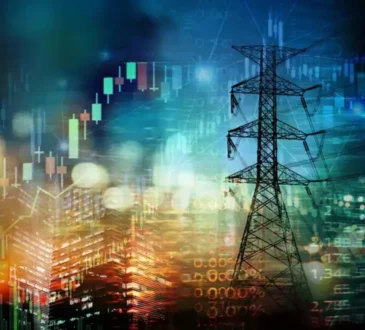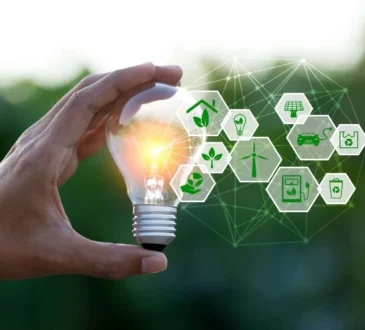What role will natural gas play in the energy transition?
The role that natural gas will play in the energy transition is complex, with multiple and diverging contributions that even now draw vastly different opinions. Some see it as another fossil fuel whose use needs to be eradicated, while others see it as a crucial bridging fuel to the zero-carbon future that has a role beyond that initial transition.
It is easy to see why gas is such an attractive option. It is a versatile fuel of growth in fast-growing markets, and an enabler for reducing emissions when used as a substitute for oil or coal. However, it is also a major source of emissions that needs to be reduced – especially in mature markets where much of the growth and substitution potential has already been tapped.
The role of gas
According to the International Energy Agency (IEA), this diversity of factors is at play in its latest forecast – Gas Market Report Q3-2021. The report states that the global increase in natural gas demand over the 2020 to 2024 period is rather modest, with a compound average annual growth rate of 2.2 per cent. Yet this may still be too high to meet a net-zero emissions target by 2050. This report forecasts a nine per cent increase in annual gas demand between 2020 and 2024 to reach close to 4,300 bcm.
By comparison, the World Energy Outlook 2020 Sustainable Development Scenario, which maps out a trajectory consistent with global net-zero emissions by 2070, sees natural gas demand increase by only four per cent between 2020 and 2025. In this forecast, demand then declines by four per cent in the following five years to reach 4,000 bcm by 2030, back to its 2019 level. The Net Zero by 2050 scenario requires a sharper decline to 3,000 bcm in 2030 – returning to the 2017 gas demand level.
“It is hard to know sometimes whether natural gas is in a golden age or a dark age,” Nikos Tsafos, James R. Schlesinger Chair in energy and geopolitics with the Energy Security and Climate Change Program at the Center for Strategic and International Studies (CSIS) says. “Gas is often presented as a promising candidate to deliver cleaner air and decarbonisation, which are reasons why many outlooks see a continued need for gas to 2040 and beyond, even assuming a rapid energy transition.
Others see it as a temporary and expensive solution that we, as a world, must not lock in, lest we undermine our efforts on deep decarbonisation. And others still question whether gas should play any role at all in the energy transition, its environmental credentials undercut by fugitive emissions, venting and flaring, and by the fact that it is still a carbon-emitting energy source. In their eyes, the sooner we can phase out gas, the better.
“The idea that the world can sharply curtail gas use in the next decade or so and still meet its climate and environmental goals is not very convincing. But equally questionable is the idea that gas must have a privileged position in the energy transition, that a low-carbon future must be good for gas. The reality is somewhere in between. Gas does different things in different markets and at different costs, so broad statements about how gas will fare in the future are unhelpful. In some markets, moving away from gas is a logical decarbonisation path; in others, additional gas use will deliver environmental benefits.”
Dialogue is missing the big picture
“Amidst the din surrounding the energy transition there is one big conversation that we need to be having much more loudly,” Fuzzy Bitar, International Association of Oil and Gas Producers (IOGP) chair & BP SVP HSE and Carbon, says. “It is about natural gas – and its role in the future energy system. I know we have just been through what some have called a ‘global gas crisis’, COP26 came to a major agreement on methane – and major industry regulators proposed new methane rules. I have heard some of that too, and it is important. But to my mind – a lot of the conversation we’re hearing misses the bigger picture.
“We know why the world needs gas – and why we produce it. And how it can help accelerate the shift to lower carbon. It can displace coal in emerging economies and provide a reliable source of energy to supplement the intermittency of renewables. Looking ahead, it can offer a low carbon energy source, when combined with CCUS and converted into blue hydrogen. In short, it is one of the biggest levers the world must get to net zero. We need to be at the table – part of the conversation and informing decisions. But if we want that seat – we have to earn it.”
According to Bitar that will require three things. First, the industry, needs to get its house in order on methane. Second, as well as tackling methane, it must take more action on CO2. And finally, it must work with policymakers. “We need to see each other not as hindrances to getting to our destination – but as allies who can help us get there,” he adds. “I firmly believe that policy and industry innovation should work together. And the most long-lasting, transformative changes occur when that happens. We’ve seen that before with tailpipe regulation turbocharging the development of electric vehicles.
“We need a similar shift if we want to make blue hydrogen a widespread reality – and if we want to see ground-breaking projects like Net Zero Teesside become the norm. The good news is we know this can work – take the relaunched Oil and Gas Methane Partnership. A voluntary initiative which now has more than 70 company signatories, many of which are IOGP members. It has, in a short period of time, become a de facto standard and has the backing of governments and the EU Commission.”
Dual fuel capability for power generation
Reducing gas consumption in the power generation sector can also be achieved by improving power plant efficiency; the vast majority of the world’s gas-fired generation fleet comprises open-cycle gas or steam turbines with about half the efficiency of recent combined cycles. Besides, over a quarter of the fleet of open-cycle turbines is more than 30 years old. Accelerating their replacement with combined-cycle gas plants (ideally hydrogen-ready to ensure future fuel flexibility) could almost halve the individual gas consumption of each plant.
The use of hydrogen as a gas turbine fuel has been demonstrated commercially, but there are differences between natural gas and hydrogen that must be considered to use hydrogen properly and safely in a gas turbine. With decades of experience running its fleet of gas turbines on varying levels of hydrogen and with a path towards running on 100 per cent hydrogen, GE is well on the road to a hydrogen future.
In addition to differences in the combustion properties of hydrogen and natural gas, it is also important to consider the impact to all gas turbine systems, as well as the overall balance of plant. In a power plant with one or more hydrogen-fuelled turbines, changes may be needed to the fuel accessories, bottoming cycle components, and plant safety systems.
As gas turbines are inherently fuel-flexible, they can be configured to operate on green hydrogen or similar fuels as a new unit or be upgraded even after extended service on traditional fuels such as natural gas. The scope of the required modifications to configure a gas turbine to operate on hydrogen depends on the initial configuration of the gas turbine and the overall balance of plant, as well as the desired hydrogen concentration in the fuel.
A hybrid approach
EnergyAustralia and GE are successfully innovating the country’s very first power plant that can operate on a blend of natural gas and hydrogen. GE’s highly versatile 9F.05 turbine is the right fit for this project, as it is hydrogen-capable and able to operate on a variety of fuels like natural gas and diesel— but also configurable for LPG, ethanol, biodiesel, and more.
The 316-MW Tallawarra B Power Station will be the first large-scale gas-powered plant built in NSW in more than twelve years and is set to operate as an ultra-flexible peak plant, rapidly firing up to stabilise the grid during demand peaks. This approach will help the people of NSW access affordable, reliable, sustainable power.
Recently, the NSW State Government and Australian Federal Government contributed AU$83 million to initiatives using hydrogen. With Tallawarra B running partial loads of hydrogen, a new bar is set for how gas turbine technology can be consistent with NSW’s plan to be net zero by 2050.
The agreement about the role of gas in the energy transition will continue, but according to Tsafos at the CSIS, gas will do well where it is cheap or where incumbency gives it an advantage, whether this demand is consistent with a decarbonisation pathway. “There are many markets where gas could deliver environmental benefits, like coal-to-gas switching in Asia, but gas is currently too expensive to compete without some other driver or policy support,” he concludes. “There are also some markets—such as petrochemicals, industry, marine shipping—where gas will do well and can help deliver on a lower-carbon future.
“Lumping all these disparate stories together is unhelpful, as is a narrative about gas that glosses over this complexity and nuance. Gas is not a climate saviour, but it also is not going anywhere any time soon. This is not the golden age for gas, but it is not the dark age either.”




